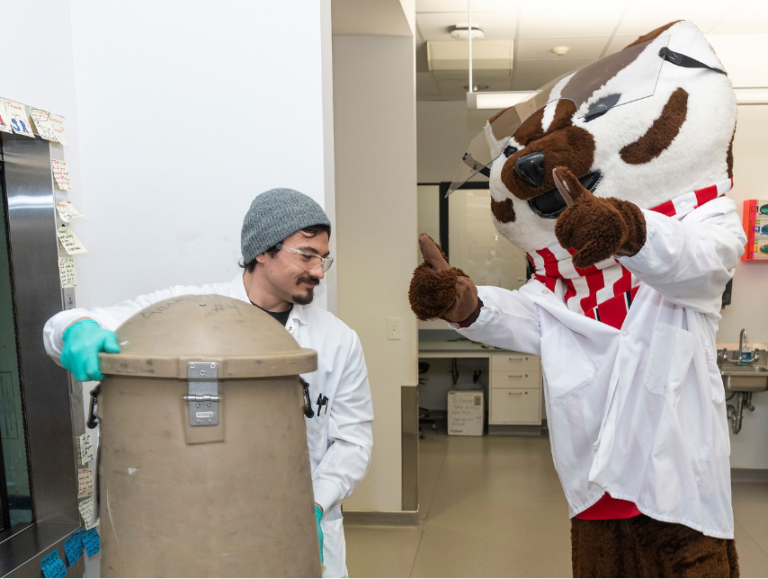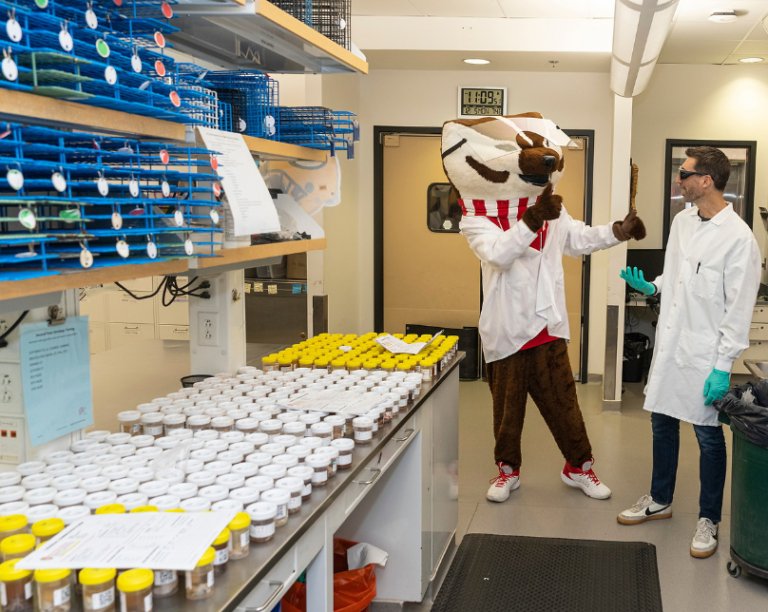General Submission Information
The WVDL accepts submissions from and bills to:
- veterinarians
- poultry owners
- certified fish health inspectors
- Wisconsin law enforcement
- regulatory agencies
- deer hunters
This limitation is based on our need for sample integrity, sample quality, and appropriate case history.
To submit samples:
- Fill out a submission form.
- Package and send your sample(s). Packaging tips are below, and information on our Shipping Program is under the Test Resources header.
- New clients: After we receive your samples, we will send you a New Client form to fill out, or you can fill our New Client Form out in advance. We will send you a welcome email. We will also create your account in our Client Portal and send you instructions within 3 business days.
- View the accession status and results in our portal by clicking the ‘Client Portal Login’ header. If you do not have a portal account, you can receive your results via email, fax, or snail mail.
When submitting samples to us, you are claiming that you have a veterinarian-client-patient relationship (VCPR). For more information on VCPRs, please visit the Helpful Links on the right.
Owners:
If you submit without a veterinarian, we can only provide results and commentary for those samples and/or carcasses submitted. Please contact a local veterinarian for clinical care, medical therapies, and disease prevention.
Helpful Links

Helpful Tips
- Use insulated shippers with ice packs or dry ice.
- Put submission forms and any other paper in a separate plastic bag.
- Label samples with their IDs and put them in the same order as on the submission form.
- Please use our electronic submission forms for submissions larger than 10 samples.
Serum Tips
- Use serum separator tubes and spin them down before shipping.
- Draw 1 ml of serum per test.
- You can order 54-count blood tube shipper boxes from our Submission Forms page.
After Submitting
- You can see your results in the Client Portal.
- Please call us with questions or requests.

Shipping Biological Specimens
The Department of Transportation has specific guidelines for packaging animal specimens. There are three different categories that all animal specimens fall under:
Exempt Animal Specimens
- Most specimens that you send for routine testing are Exempt Animal Specimens. Since the animals are healthy, it is not likely that the sample is infectious.
- Example: serum from a healthy cow submitted for Johne’s disease testing
Biological Substance Category B
- Category B includes substances that are likely infectious but do not meet the criteria for Category A.
- Example: fecal samples, fluids and excreta, and postmortem tissue for bacteriological, parasitological, or viral testing for sick animals
Biological Substance Category A
- Category A includes substances transported in a form that can cause permanent disability or life-threatening disease when exposed. You will probably never need to ship Category A specimens.
- Example: cultures of viruses like African swine fever or lumpy skin disease
Ownership of Specimens
When using our submission form, you accept a contract with us for test results and interpretation of results. All samples on a submission form—including isolates made from those samples—become our property. We have the right to refer a portion of the specimen to an appropriate laboratory for additional testing. We also have the right to use the samples for any lawful purpose, including but not limited to performing applied research and test development.